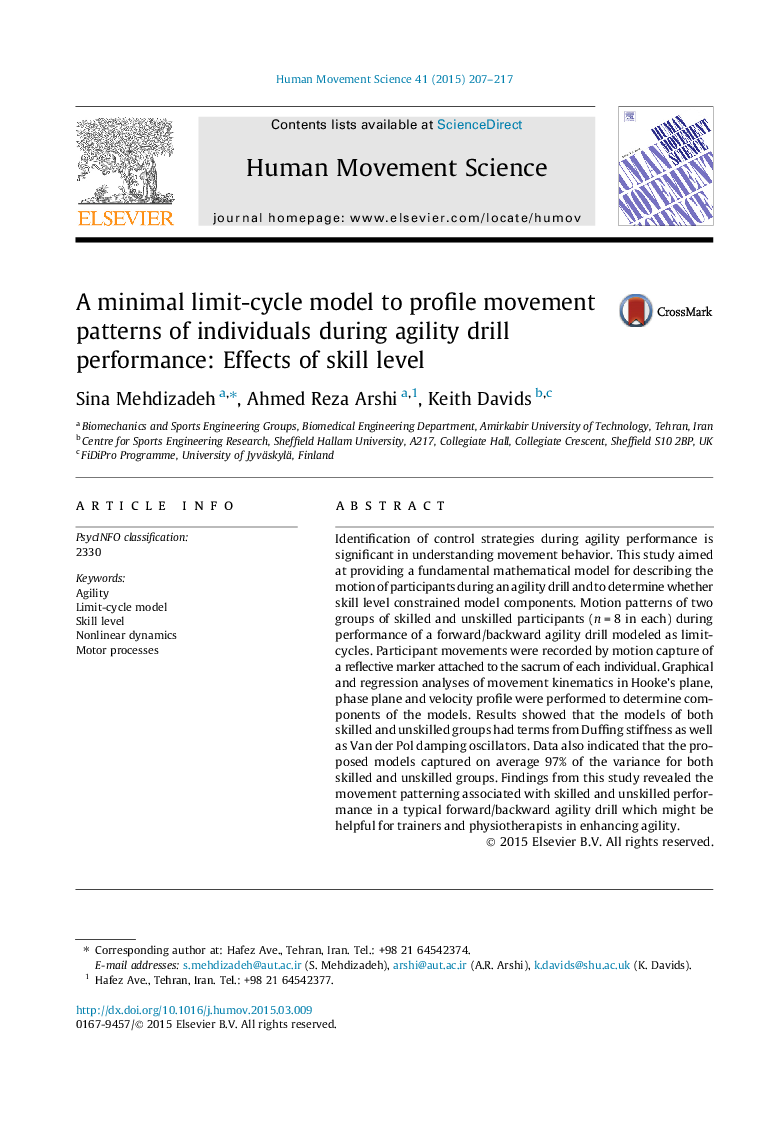| Article ID | Journal | Published Year | Pages | File Type |
|---|---|---|---|---|
| 7291989 | Human Movement Science | 2015 | 11 Pages |
Abstract
Identification of control strategies during agility performance is significant in understanding movement behavior. This study aimed at providing a fundamental mathematical model for describing the motion of participants during an agility drill and to determine whether skill level constrained model components. Motion patterns of two groups of skilled and unskilled participants (n = 8 in each) during performance of a forward/backward agility drill modeled as limit-cycles. Participant movements were recorded by motion capture of a reflective marker attached to the sacrum of each individual. Graphical and regression analyses of movement kinematics in Hooke's plane, phase plane and velocity profile were performed to determine components of the models. Results showed that the models of both skilled and unskilled groups had terms from Duffing stiffness as well as Van der Pol damping oscillators. Data also indicated that the proposed models captured on average 97% of the variance for both skilled and unskilled groups. Findings from this study revealed the movement patterning associated with skilled and unskilled performance in a typical forward/backward agility drill which might be helpful for trainers and physiotherapists in enhancing agility.
Related Topics
Life Sciences
Neuroscience
Cognitive Neuroscience
Authors
Sina Mehdizadeh, Ahmed Reza Arshi, Keith Davids,
